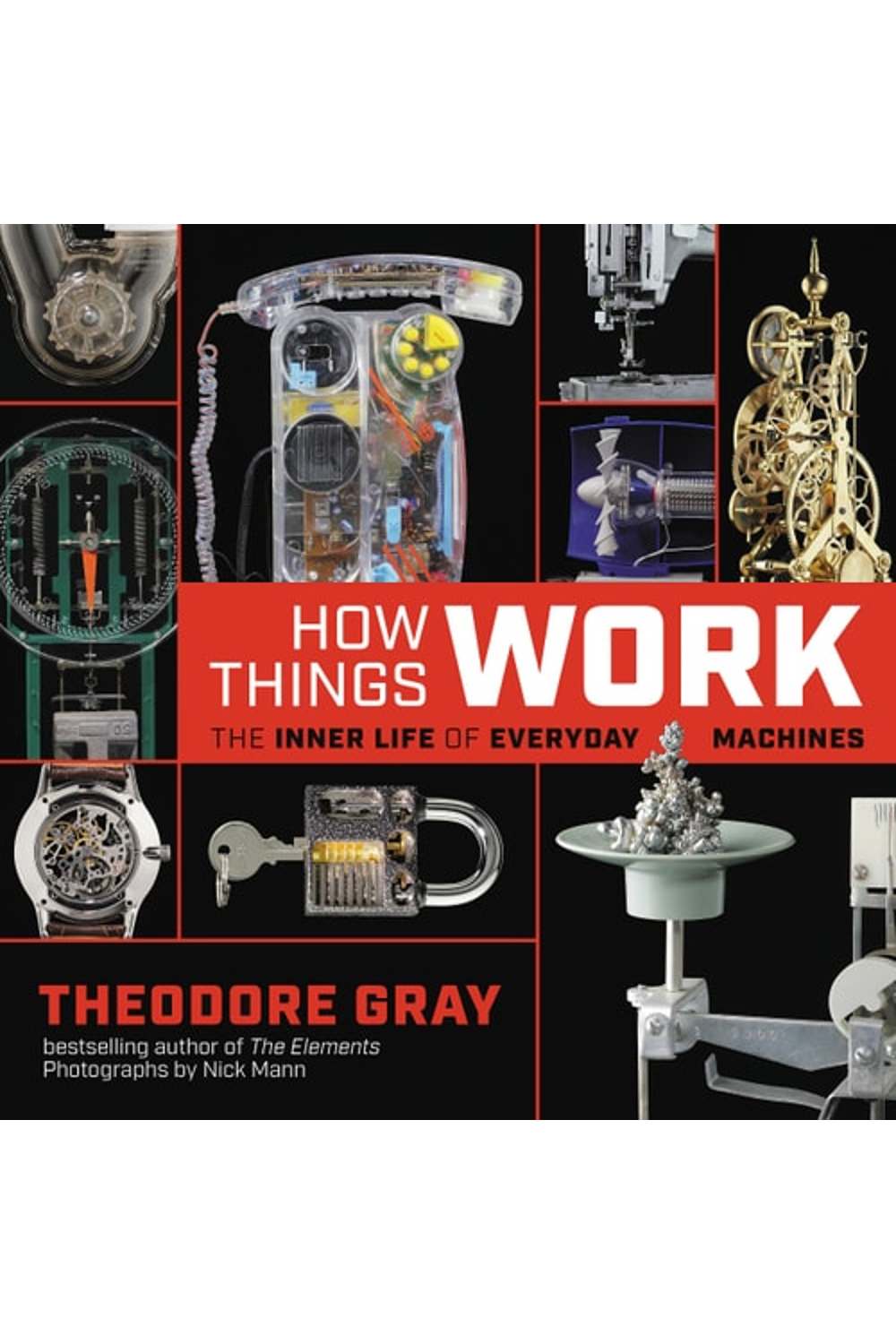Uncover the hidden beauty and ingenious engineering of everyday machines with Theodore Gray’s “How Things Work.” This illustrated hardcover edition is perfect for curious minds of all ages. Explore the mechanics behind familiar objects, from cotton gins to wristwatches, through Gray’s engaging stories, real-time experiments, and stunning photography. A must-have for makers, builders, and anyone fascinated by the science and history of how things operate, this book brings complex concepts to life with clarity and humor. Dive into the inner life of machines and discover the extraordinary science that surrounds us. Published by Black Dog & Leventhal. ISBN: 9780316445436
How Things Work: The Inner Life of Everyday Machines
27,45 $
In stock
Million-copy bestselling author of The Elements, Molecules, and Reactions Theodore Gray applies his trademark mix of engaging stories, real-time experiments, and stunning photography to the inner workings of machines, big and small, revealing the extraordinary science, beauty, and rich history of everyday things.
Theodore Gray has become a household name among fans, both young and old, of popular science and mechanics. He’s an incorrigible tinkerer with a constant curiosity for how things work. Gray’s readers love how he always brings the perfect combination of know-how, humor, and daring-do to every project or demonstration, be it scientific or mechanical.
In How Things Work he explores the mechanical underpinnings of dozens of types of machines and mechanisms, from the cotton gin to the wristwatch to an industrial loom. Filled with stunning original photographs in Gray’s inimitable style, How Things Work is a must-have exploration of stuff–large and small–for any builder, maker or lover of mechanical things.
| Authors | |
|---|---|
| Binding | |
| Condition | |
| ISBN-10 | 0316445436 |
| ISBN-13 | 9780316445436 |
| Language | |
| Pages | 256 |
| Publisher | |
| Year published | |
| Weight | 1420 |
| Edition | Illustrated |
Related products
- Additional information
- Currencies
- USD – United States dollar
- EUR – Euro
- GBP – Pound sterling
- CNY – Chinese yuan
- BRL – Brazilian real
- MXN – Mexican peso
- JPY – Japanese yen
- PHP – Philippine peso
- THB – Thai baht
- PLN – Polish złoty
- CAD – Canadian dollar
- MYR – Malaysian ringgit
- AUD – Australian dollar
- TWD – New Taiwan dollar
- CZK – Czech koruna
- SEK – Swedish krona
- HUF – Hungarian forint
- ILS – Israeli new shekel
- CHF – Swiss franc
- HKD – Hong Kong dollar
- DKK – Danish krone
- SGD – Singapore dollar
- NOK – Norwegian krone
- NZD – New Zealand dollar





